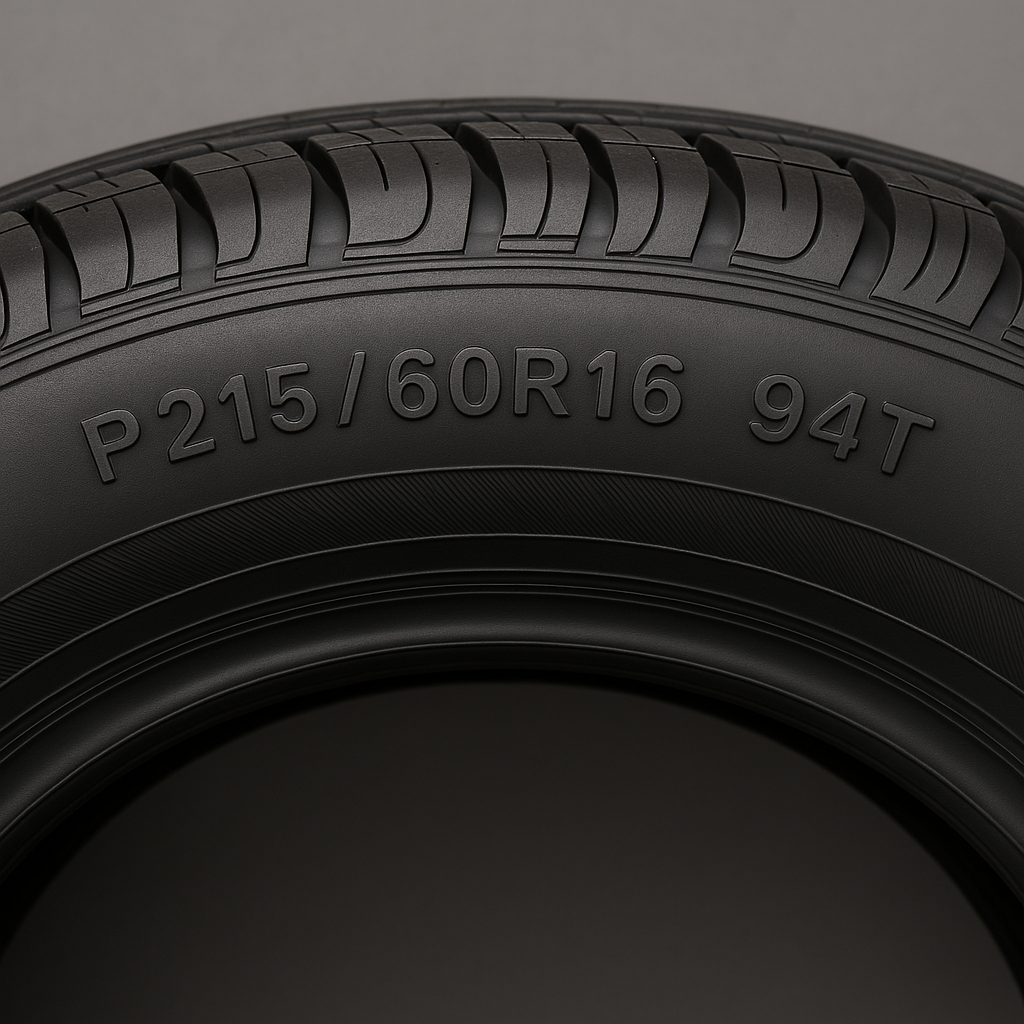 When it’s time to buy new tires, you’ll likely be confronted with a sidewall full of letters and numbers that look more like a secret code than something useful. But once you understand what these tire sizes and codes mean, you can make a more informed decision that keeps your vehicle riding safely and smoothly.
When it’s time to buy new tires, you’ll likely be confronted with a sidewall full of letters and numbers that look more like a secret code than something useful. But once you understand what these tire sizes and codes mean, you can make a more informed decision that keeps your vehicle riding safely and smoothly.
Here’s a simple breakdown to help drivers with little or no technical experience understand tire sizing basics.
What Does a Tire Size Look Like?
A typical tire size might read: P215/60R16 94T
Let’s break it down piece by piece.
1. Tire Type: “P” for Passenger Vehicle
The first letter tells you the type of tire:
- P = Passenger car
- LT = Light Truck (for vehicles that carry heavy loads or tow)
- No letter? Sometimes European tires omit this.
2. Tire Width: “215”
This number refers to the width of the tire in millimeters, measured from sidewall to sidewall. So, 215 means the tire is 215mm wide.
3. Aspect Ratio: “60”
This number is a percentage that refers to the height of the tire’s sidewall as a proportion of its width.
- 60 means the height is 60% of the tire’s width.
- A lower number (like 45) usually means a sportier, lower-profile tire.
4. Tire Construction: “R”
- R stands for Radial, the most common type of tire today.
- Other types (like Bias Ply) are rare in modern passenger vehicles.
5. Wheel Diameter: “16”
This is the size of the wheel (or rim) in inches that the tire is designed to fit.
In this case, the tire fits a 16-inch wheel.
6. Load Index: “94”
This number corresponds to the maximum weight a tire can safely support when properly inflated.
- A load index of 94 = 1,477 pounds per tire.
Check a tire load index chart for other values.
7. Speed Rating: “T”
The letter at the end refers to the maximum speed the tire can safely handle:
- T = Up to 118 mph
- H = Up to 130 mph
- V = Up to 149 mph
Unless you drive a high-performance car, a T or H rated tire is usually more than enough.
Why Tire Codes Matter
Knowing what these codes mean helps you:
- Choose the correct size when shopping for new tires.
- Understand the performance and load capacity of your current tires.
- Avoid compatibility issues with your vehicle.
Installing the wrong size can affect your car’s fuel economy, handling, and even safety.
Final Tip: Check the Owner’s Manual or Door Sticker
Not sure what size tires your car needs? Look inside the driver’s side door or in your owner’s manual. The recommended tire size and pressure will be listed there.
Understanding tire sizes and codes doesn’t require a mechanic’s license. With this basic guide, you’ll be better prepared to choose the right new tires and keep your vehicle performing at its best. If you have specific questions, your trusted tire professionals are available to assist!
